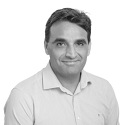December 14, 2017 – InsideBIGDATA
How to Keep the Bah-humbug Micro-glitch from Ruining Your Holiday Sales
This time of year, a better name for the micro-glitch, might be the “Micro-Grinch.” They do share similar traits, after all, such as the capacity to begin small and snowball into something that has the potential to steal a retailer’s holiday season. Here’s a few big data analysis tips to help retailers keep the glitch-grinch from ruining both the holidays sales season and their bottom line.
The Micro-Glitch is More Common than You Think
All online retailers and customers experience them at some point. The mis-coded product that disappears from the cart during check-out. Or, high-volume traffic overloads payment processing servers leading to credit card failures.
During an average sales day, these glitches and errors might only cost the typical online retailer about $40,000. This is certainly no drop in the bucket. But consider what happens when you change the phrase “average day” to “pre-holiday day.” Suddenly a run-of-the-mill glitch, becomes both a $250,000 revenue loss and a personal call from the C-suite wondering why your company is trending negatively on Twitter.
It is possible to avoid the glitch. Consider taking these steps:
Track web traffic—You can identify glitches faster if you know which pages your customers visit, where leads are generated from, and what offers they are clicking. Use analytic tools to watch for traffic drops or spikes on pages, page elements, or products on your app or website. A run-up in sales against a drop-off in revenues for a specific product could indicate product mispricing. Or a drop in visits to a specific page could suggest an app error occurring only on a certain type of device or browser. The greater the level of granularity you examine, the faster you can pinpoint problems and respond.
Watch social media—We’ve all seen it happen—a celebrity shares their look on Instagram or Snapchat and suddenly their jewelry or clothing is selling like crazy. If you only identify it after the fact, you might run out of inventory or miss the opportunity to bundle that product with others to increase basket size. Tracking social media metrics brings true operational value if it’s correlated in real time with product demand changes so you can adjust your business strategy in real time.
Monitor third-party data—External influences, such as competitor advertising and weather, can often significantly influence sales. For example, an impending snow storm may result in an increase in demand for cold weather gear. Companies need to seamlessly connect all data sources and key performance indicators (KPIs) in order to correlate and analyze trends in real time to ensure the best response to findings, such as a shift in inventory or pricing. In the old days, this used to be done by a team of people watching KPIs. Today, no team can integrate enough data quickly enough to effectively respond—especially during the holidays. Solutions need to be automated.
Combine DevOps data with other KPIs—Monitoring DevOps and IT data and integrating it with other KPIs can help determine root cause of an error more quickly. For example, is a sudden drop in product sales the result of a coding error or is it because a celebrity dissed the product on social media? Without the context of business KPIs, Dev/Ops and IT offer only half the story. Today, data must encompass the bigger business picture, avoiding the siloed approach.
 David Drai co-founded
David Drai co-founded 

